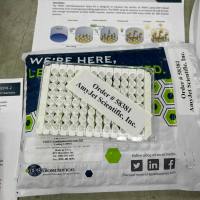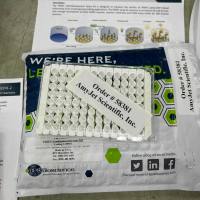In Vivo SELEX in Vertebrate Cells
互联网
592
Iterative selection strategies have been widely used to enrich specific RNA molecules from randomized pools based on binding affinities or an RNA-mediated activity ( 6 , 8 ). The vast majority of these procedures have been performed in cell-free systems. Of particular use would be iterative selection within cell cultures to enrich RNA sequences that mediate a specific function in vivo. This approach is readily applied to selection of exonic sequences that enhance exon inclusion; these sequences are known as exonic splicing enhancers ( 2 ). This chapter describes a procedure that uses cycles of transient transfection of minigene plasmids containing an alternative exon with randomized sequence and selective reverse transcriptase-polymerase chain reaction (RT-PCR) to enrich exon sequences that enhance inclusion of the alternative exon. The selection scheme is outlined in Fig. 1A . A DNA cassette containing a randomized region (10–15 nucleotides) is directionally ligated into a weakly recognized exon of a minigene. The ligation reaction is transiently transfected directly into cultured cells and total RNA is extracted after 40–48 h. Selectable exons that are spliced into the mRNA are selectively amplified by RT-PCR using oligos that prime only on spliced mRNAs that include the randomized exon. The randomized cassette is excised from the PCR product by the restriction enzymes used for cloning. This digestion product contains a selected population of sequences that enhance exon inclusion.
Fig. 1A. Strategy for in vivo selection. ( A ) Selection scheme. ( B ) Amplification of single stranded oligonucleotide containing randomized region for first round of selection. Double-stranded copies are generated by PCR using oligonucleotides that anneal to constant sequences that flank the randomized region. The Sal I and Bam HI restriction sites are indicated by underlining.






